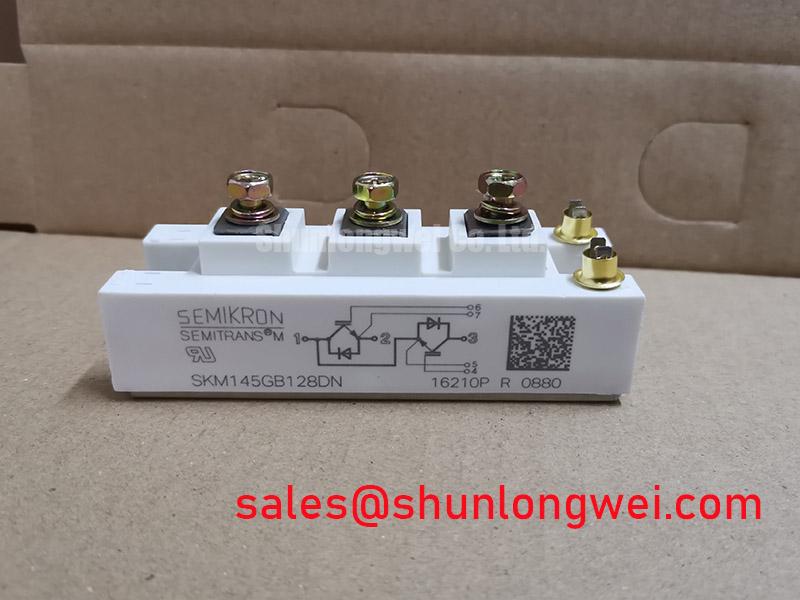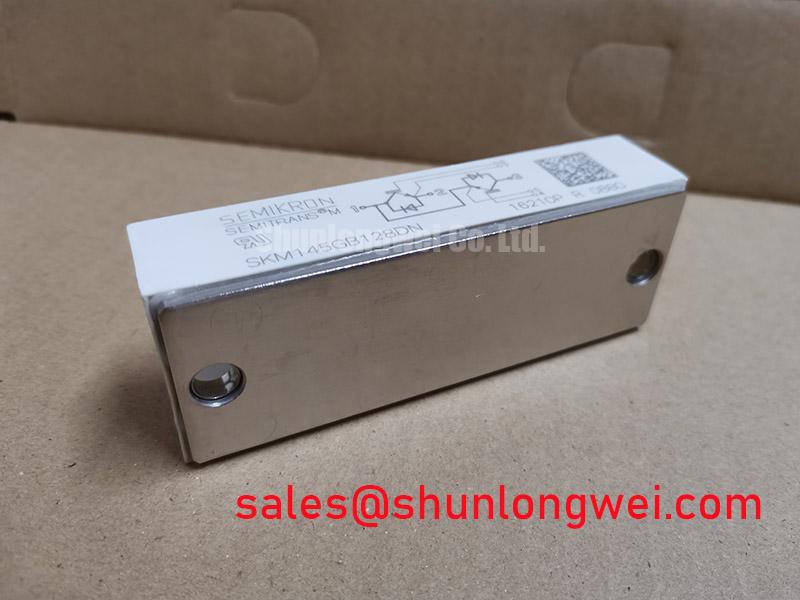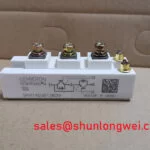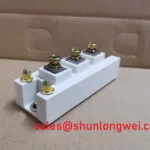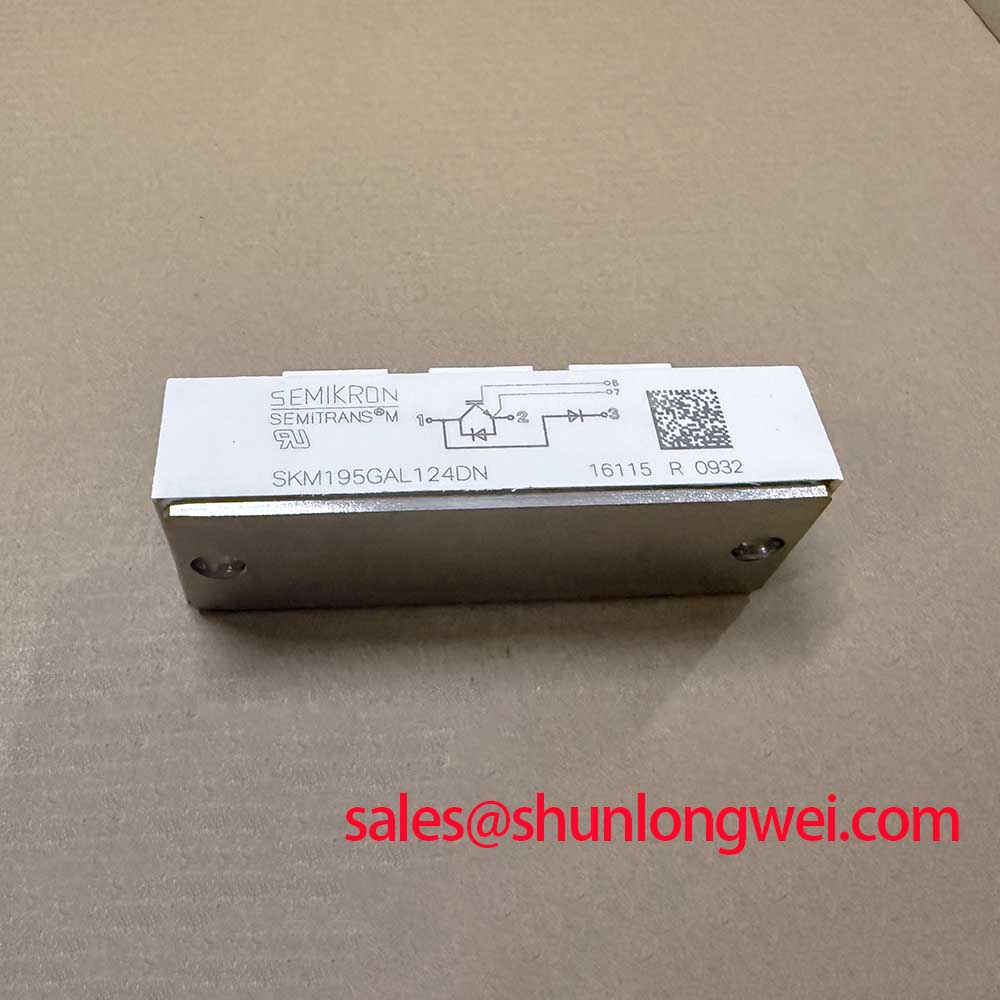Content last revised on November 12, 2025
Semikron SKM145GB128DN | Robust 1200V IGBT for High-Reliability Power Conversion
The Semikron SKM145GB128DN is a testament to engineering that prioritizes robustness and operational longevity. As a key component in Semikron's portfolio, this 1200V half-bridge IGBT module is designed for power conversion systems where reliability is not just a feature, but a fundamental requirement. It combines proven silicon technology with a rugged module construction, making it a trusted workhorse for demanding industrial applications.
- Proven NPT Technology: Utilizes Non-Punch-Through (NPT) IGBTs, renowned for their ruggedness and excellent short-circuit withstand capabilities.
- Integrated CAL Diode: Features an integrated CAL (Controlled Axial Lifetime) freewheeling diode with soft recovery characteristics, minimizing EMI and simplifying system design.
- Robust Electrical Performance: Rated for 1200V and 145A, providing a substantial safety margin for systems operating on 480V to 690V AC lines.
- Industry-Standard Package: Housed in the industry-recognized SEMITRANS® 2 package, ensuring straightforward mechanical integration and thermal management.
Key Technical Specifications
The following table outlines the critical performance parameters for the SKM145GB128DN. For a comprehensive overview of all electrical and thermal characteristics, designers should consult the official datasheet. Download the SKM145GB128DN Datasheet.
| Parameter | Value |
|---|---|
| Collector-Emitter Voltage (VCES) | 1200 V |
| Continuous Collector Current (IC) @ Tc=25°C | 145 A |
| Collector-Emitter Saturation Voltage (VCE(sat)) @ IC=100A, Tj=125°C | Typ. 2.2 V |
| Short-Circuit Withstand Time (tsc) | 10 µs |
| Thermal Resistance, Junction to Case (Rth(j-c)) per IGBT | 0.17 K/W |
A Technical Deep Dive into the Module's Core
The enduring performance of the Semikron SKM145GB128DN stems from its foundational silicon design. The use of Non-Punch-Through (NPT) IGBT technology provides a distinct set of advantages. Unlike trench-gate designs optimized purely for low conduction loss, NPT technology inherently delivers superior ruggedness. A key characteristic is its positive temperature coefficient for VCE(sat), which ensures automatic current sharing when paralleling modules—a critical feature for scaling power output without risking thermal runaway. For a deeper understanding of the internal components, explore our guide on the hybrid structure of IGBTs.
Complementing the IGBT is the integrated Semikron CAL (Controlled Axial Lifetime) freewheeling diode. In hard-switching applications like motor drives, the diode's recovery behavior is paramount. The CAL diode is engineered for "soft" recovery, meaning it turns off smoothly with low peak reverse recovery current (Irrm). This behavior significantly reduces voltage overshoots and high-frequency ringing, leading to lower EMI emissions and reducing the dependency on large, costly snubber circuits.
Optimized for Demanding Industrial Applications
The specific characteristics of the SKM145GB128DN make it an ideal choice for several high-power applications:
- Motor Drives: In variable frequency drives (VFDs), the module's robust Safe Operating Area (SOA) and excellent short-circuit withstand time provide the resilience needed to handle the inductive load switching and potential fault conditions common in industrial motor control.
- Uninterruptible Power Supplies (UPS): For high-availability systems, reliability is non-negotiable. The module's proven design, stable thermal performance, and robust construction contribute to the long operational life required in critical power backup infrastructure.
- Welding Power Supplies: Welding applications subject components to high current pulses and demanding thermal cycles. The SKM145GB128DN's thermal design and rugged silicon are well-suited to withstand these repetitive stresses, ensuring consistent performance.
Engineer's FAQ for the SKM145GB128DN
Can multiple SKM145GB128DN modules be paralleled for higher power output?
Yes. The NPT IGBTs within this module exhibit a positive temperature coefficient of VCE(sat). This means as a chip heats up, its on-state resistance increases, naturally forcing current to share with other, cooler chips. This self-balancing effect makes paralleling highly effective. However, designers must still ensure a symmetrical busbar layout and use individual gate resistors to prevent oscillations.
What are the most critical thermal management considerations for this module?
Achieving the specified performance and reliability hinges on effective thermal management. The low thermal resistance (Rth(j-c)) of 0.17 K/W is excellent, but it must be paired with an equally low-resistance thermal path to the ambient air. This requires a high-performance heatsink, a quality thermal interface material (TIM), and adherence to the specified mounting torque to ensure optimal contact and heat transfer. Understanding the impact of thermal resistance is crucial, as we detail in our article on why Rth matters for IGBT performance.

